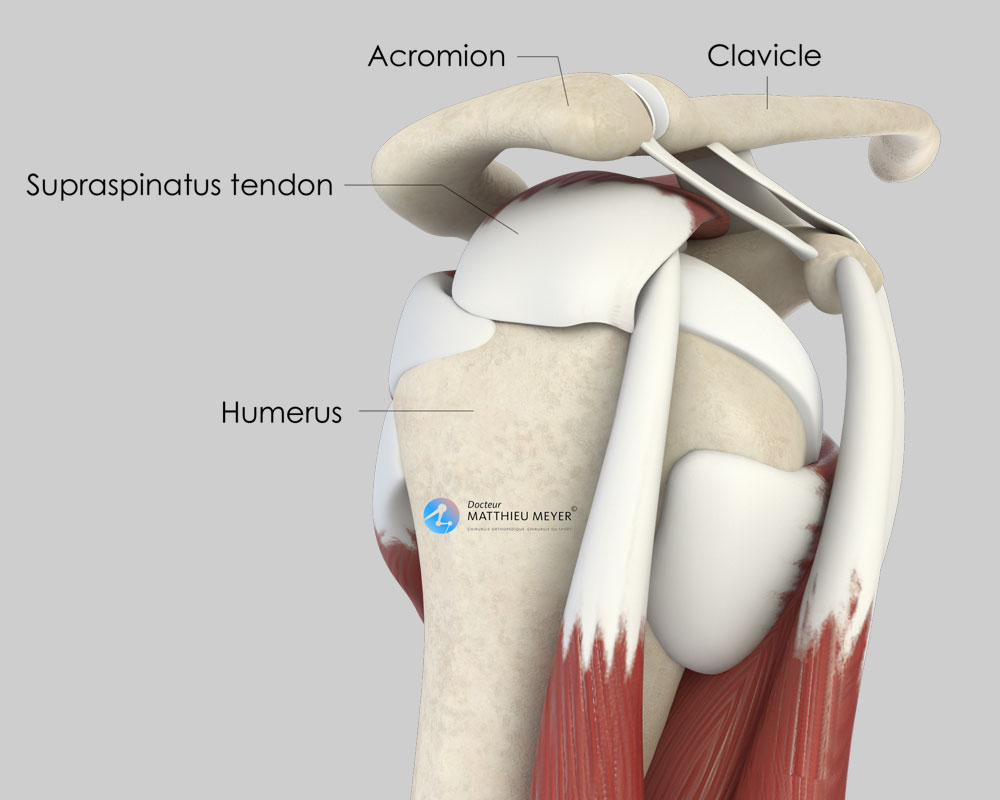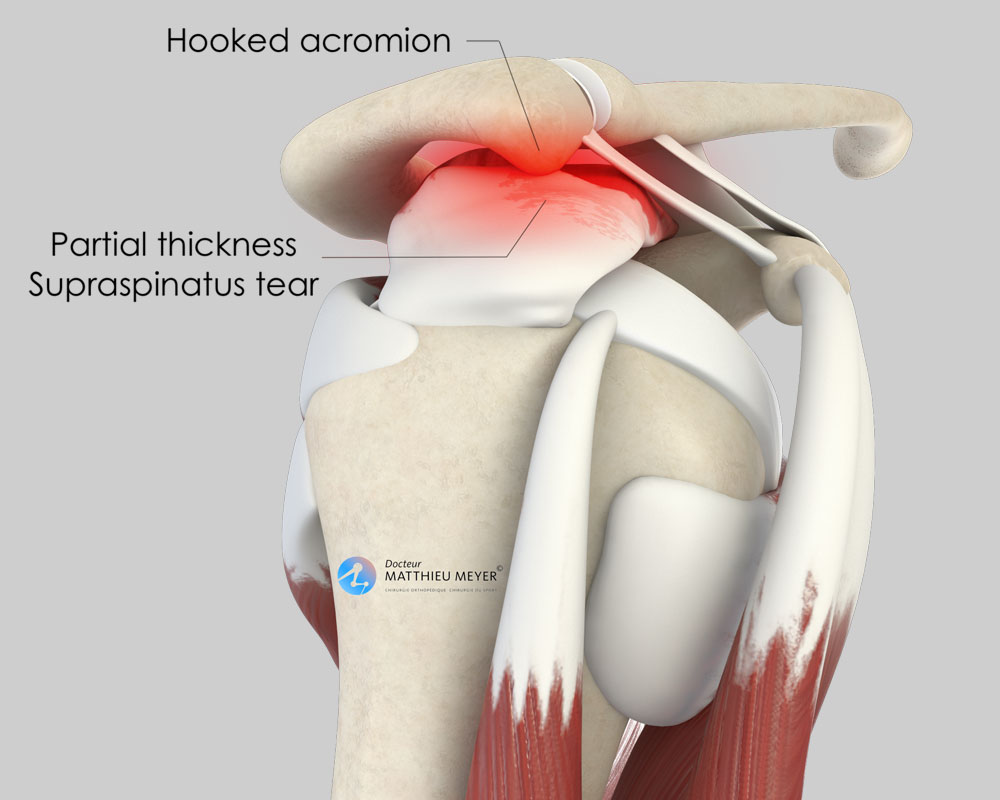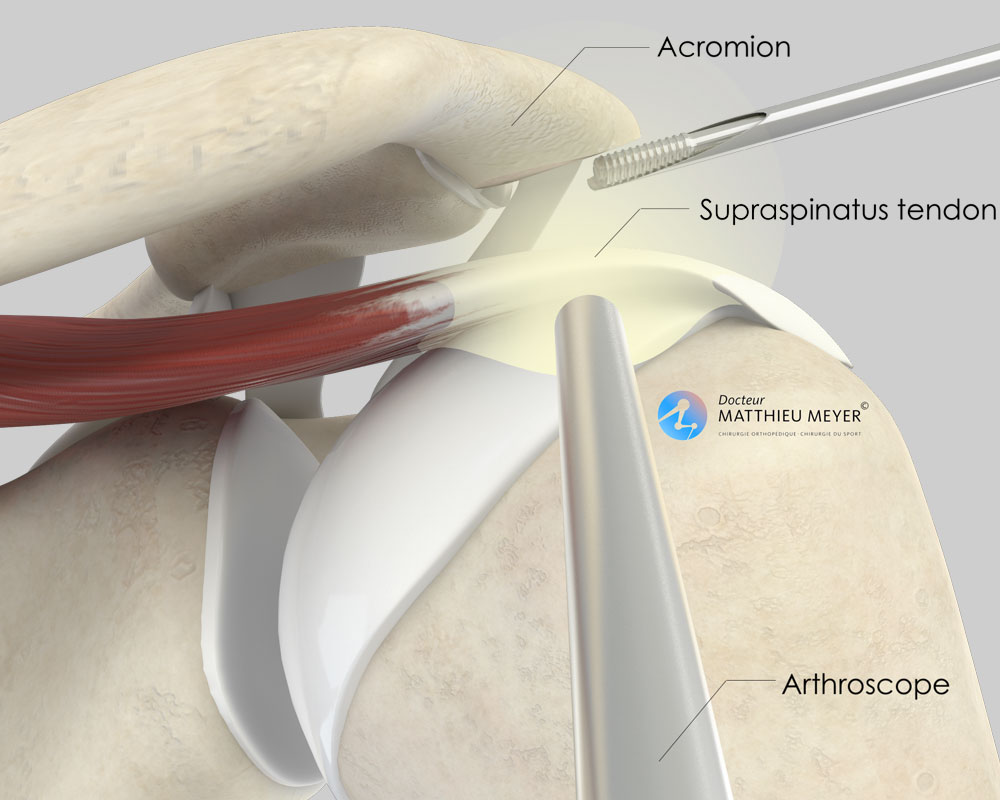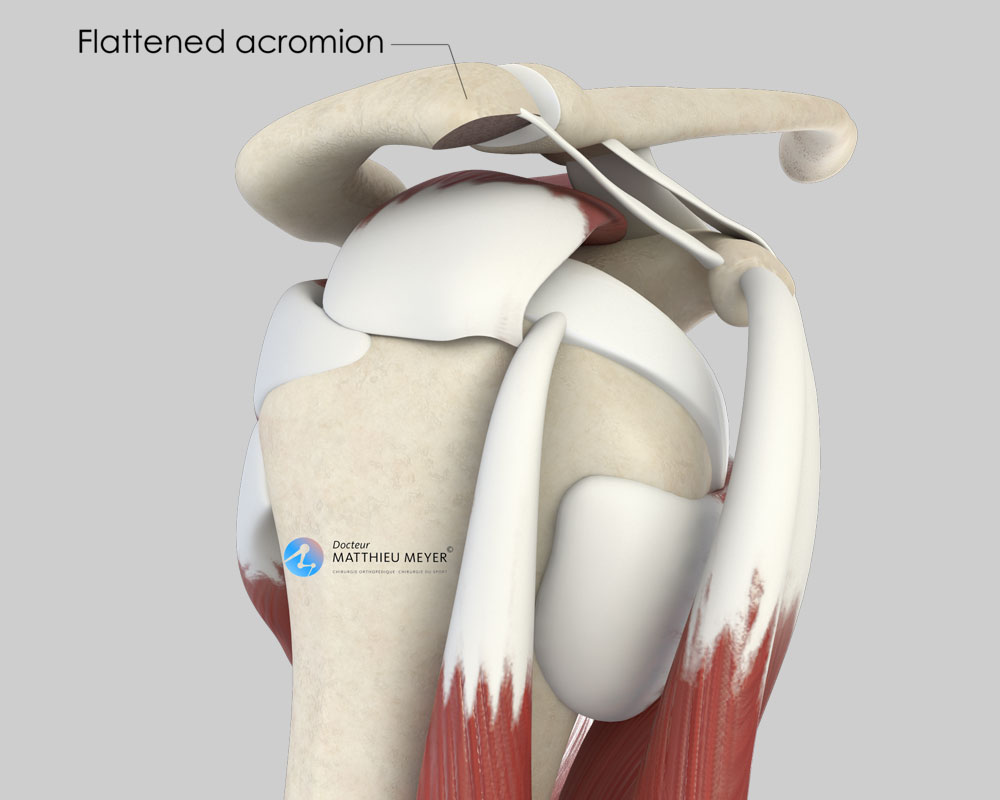Arthroscopic Shoulder Acromioplasty
Home » Operations » Shoulder Surgery » Painful Shoulder » Arthroscopic Shoulder Acromioplasty
What is subacromial shoulder impingement?
The rotator cuff is a group of four muscles located in the shoulder involved in lateral elevation and rotation of the arm. These muscles are attached to the humerus with tendons of which some slide under the acromion on the shoulder blade.
The acromion can be thick or pointed in some individuals, sometimes forming a bone spur resulting in abnormal contact with some of the rotator cuff tendons during lifting and rotating movements of the arm. This subacromial impingement causes pain and can result in the gradual tear of the rotator cuff tendons.
What examinations are necessary?
X-rays are carried out to assess the shape of the acromion and check for a bone spur.
An ultrasound scan or an MRI is also carried out to explore any inflammation or possible tears of the rotator cuff tendons.
When is an arthroscopic acromioplasty necessary?
An operation is never systematic and depends on the tolerance of the subacromial impingement from a functional point of view.
Subacromial impingement must initially be treated with injections in the shoulder and functional rehabilitation sessions. When this treatment is no longer enough to relieve the patient, surgery may be considered.
The operation
The procedure is planned during pre-surgical consultations. A pre-anaesthesia consultation before the operation and a pre-operative assessment are conducted to minimise the risk of complications. This procedure is usually carried out under general anaesthesia. The anaesthetist will decide on the most suitable anaesthetic together with the patient.
The operation takes place in an operating theatre in compliance with strict standards of cleanliness and safety, and lasts about 30 minutes. The patient is put in the beach chair or lateral decubitus position, and mild traction is applied to the arm.
Arthroscopy
The acromioplasty is carried out arthroscopically, a minimally invasive surgical technique. Very small incisions of a few millimetres are made in the skin through which a camera and the instruments required for the operation can be inserted in the joint. Arthroscopic surgery enables the damage to be assessed and the scheduled procedures to be performed while minimising the trauma for the shoulder and the unsightly appearance (small scars).
In rare cases, open surgery with a larger incision is necessary.
What procedures are carried out?
Different surgical procedures can be performed and potentially combined during the operation:
- Acromioplasty: consists in thinning the acromion and removing the acromial bone spur located under the arch where the inflamed rotator cuff tendons slide.
- Subacromial bursectomy: consists in removing the subacromial bursa, which is the tissue located between the acromion and the rotator cuff tendons. Subacromial impingement causes severe inflammation of this mucous bursa and its removal helps decrease the pain.
- Resection of the acromioclavicular joint: consists in decreasing the rubbing between the clavicle and the shoulder blade, which is sometimes diseased and painful and contributes to the development of the acromial spur.
After the operation
Postoperative pain is managed by the anaesthetists who often use an interscalene nerve block that numbs the shoulder and the upper limb for several hours after the patient wakes up.
The shoulder does not need to be immobilised but the arm will be placed in a sling for the first few days to limit postoperative pain.
The patient can return home the day of the operation or the day after.
Self-rehabilitation exercises will be explained by the physiotherapists during your stay at the clinic and more intensive rehabilitation will begin with a local physiotherapist. Rehabilitation often lasts between 1 and 2 months.
Follow-up consultations are scheduled 1 and 3 months after the operation to ensure good recovery and adjust rehabilitation but also to detect any potential complications.
From a practical point of view, medical leave is often between 3 and 6 weeks but depends on the profession and the side operated on (dominant or not). Car driving can be resumed around the 3rd week after the operation.
Risks linked to the operation
Unfortunately, zero risk does not exist in surgery. Any operation has its risks and limitations, which you must accept or not undergo the operation. However, if an operation is proposed, the surgeon and the anaesthetist consider that the expected benefits far outweigh the risk incurred.
Some risks, such as microbial infections of the surgical site, are common to all types of surgery. Fortunately, this complication is rare but when it occurs requires another operation and a course of antibiotics. Bruising can also appear around the surgical site.
In rare cases, the shoulder may remain stiff and painful for several months after the operation. This complication, known as capsulitis, is linked to the unpredictable reaction of the sympathetic nervous system and can take a long time to heal.
Nerves can also be damaged accidentally during the operation with a risk of paralysis or loss of feeling in the limb operated on, which can be transitory or permanent.
If you have any concerns about the operation, do not hesitate to talk to your surgeon or the anaesthetist and they will answer any questions you may have.
In summary...
When is surgery necessary?
In the case of subacromial impingement not relieved by medical treatment
Aim of the operation
Decrease the pain
Which anaesthesia?
General in most cases
Duration of hospitalisation
Outpatient or 1 night after the operation
Duration of rehabilitation
Between 1 and 2 months with an independent physiotherapist
Duration of medical leave
Between 3 and 6 weeks according to the side operated on and the patient’s profession
Resumption of car driving
3 weeks after the operation
Resumption of sport
3 months after the operation
Make an appointment
please do not hesitate to contact us or make an appointment online via DoctoLib





